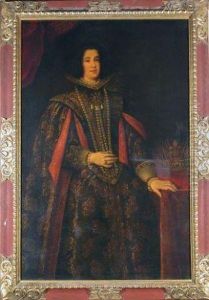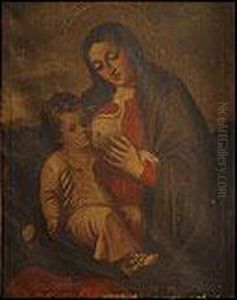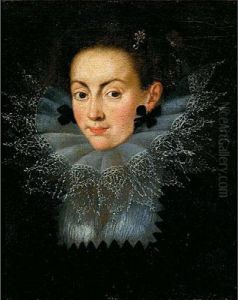Bartolome Gonzales Paintings
Bartolomé González y Serrano was a prominent Spanish painter, born in 1564 in Valladolid, Spain. He is best known for his work during the late Renaissance and early Baroque periods. González demonstrated an exceptional talent in portraiture, capturing the essence of the Spanish court with elegance and an acute attention to detail. His skill in rendering the textures of fabrics and jewels, as well as the subtleties of facial expressions, made him a favored artist among the Spanish nobility.
González's career flourished under the patronage of the Habsburg monarchs. He served as a court painter to King Philip III of Spain, a position that not only elevated his status as an artist but also allowed him to influence the development of Spanish portraiture during the early 17th century. His portraits are characterized by their sophisticated use of light and shadow, a technique that enhanced the three-dimensional effect of his subjects and contributed to the evolving Baroque style.
Despite his focus on portraiture, González was also accomplished in religious and mythological subjects, although these works are less known and appreciated than his court portraits. His contributions to Spanish art were significant, bridging the transition between the Renaissance's detailed precision and the Baroque's emotional depth and dynamism.
González's legacy is a testament to his ability to capture the grandeur and intricacy of the Spanish court. His works are housed in several major museums, including the Prado Museum in Madrid, where they continue to be studied and admired for their beauty and historical value. Bartolomé González y Serrano died in 1627, leaving behind a body of work that remains an important part of Spain's artistic heritage.


